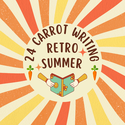 This week's throwback blog was first posted in 2018. This rad post recognizes that you may be looking to catch a wave this summer, but offers tips to make sure your don't wipeout on those writing goals! Enjoy as our RETRO SUMMER continues!  By Annie Cronin Romano Summer is here. It’s a time for sun, sand, and sangria! A time for hanging out with friends and family, relaxing vacations, and outdoor fun. So, my fine writer friends, where does your writing fit into the summertime equation? Because, as most of us know, summer is also notoriously known as a time for slacking. Don’t be a slacker, my writer friends! This is where those writing goals come in handy. Hopefully you included that “forgiveness clause” into your writing goals (see Set Your Writing Goals With a Little Forgiveness, 1/23/18). But if you didn’t, or if you haven’t set your summer writing goals yet, here are some tips for keeping the ink flowing while enjoying this active time of year. Tip #1. Going on vacation? Take a journal with you and write in it daily. It doesn’t have to be long. Just a few reflections on your day, or perhaps a description of a scene that you don’t want to forget. Maybe you came up with some story ideas. Jot them down. Keep your writer’s mind active even when you’re not working on an actual story. Tip #2. Read! What better way to become a better writer than to read consistently. Writers hear it all the time and, naturally, love books, so there’s a good chance you read regularly anyway. But in case time is more elusive for you the rest of the year, take some time this summer to crack the spine on a few books you’ve been wanting to dive into. You may notice some new writing approaches or styles along the way. Tip #3. Use your phone’s note-taking app. Even if you don’t have time to do much extended writing, sparks of inspiration may strike, and you probably won't have your laptop or notebook available if you’re at the amusement park or on a hike. So pull out your phone and type yourself a brief note. Store that idea or inspiration away for another time. Tip #4. Take pictures, especially of unusual things. Vacations are full of picture taking opportunities, but step away from the selfies and snapshots of family, and take some random “slice of life” shots. Then use those images later as writing prompts. I know. Brilliant, right? You never know what the lens will capture. Your next story gem could lurk in those precious photos! Tip #5. Enjoy! After all…it’s summer! Happy writing! ~Annie
0 Comments
 by Annie Romano Form submissions such as Query Manager have become the new normal for writers submitting to agents. Fading are the days of email queries (though some agents still accept them). At a glance, it seems like completing a submission form is straightforward: Fill in the blanks. Easy, right? But there are common missteps that might create a negative impression for agents before they even read your sample pages. What follows is a walk-through of the most encountered submission form features with notes on common errors or shaky habits. Avoiding these missteps will help your submission present as professional and polished. (Note: Since agents can customize their forms, only the most common fill-in-the-blank features are covered here. Also, agents have their own style of considering submissions. Some read the query letter first; others jump right into the sample pages. These are simply tips to help you ensure your submission shines.) WORD COUNT: Approximate word count is fine. If your word count is 97,256 words, 97,000 will suffice. This isn’t a make-or-break issue by any means; just something to be aware of. GENRE: This IS important. Writers sometimes try to fit a genre that agents don't accept into their inbox by choosing another category. For instance, I do not represent science fiction, so there’s no “Science Fiction” option in my genre dropdown menu, but I’ll often get submissions for this genre submitted under the “General Fiction” category. Once I read that query/pages and it becomes clear the manuscript is sci-fi, I’m not going to accept it. And it’s not because it’s not well-written; it’s because I don’t represent sci-fi. It’s simply not in my wheelhouse, and writers should want their work represented by someone who knows the market for their genre and is familiar with what editors are seeking for that particular category. QUERY LETTER: Yes, it’s a form, and yes, you clicked this specific agent’s link and typed in your name in the spaces above, but the query letter should still be a letter. In other words, it should be addressed to someone. (Some agents might not care about this detail, but to me it shows you’re taking care with your submission.) Include the agent's name: Dear “X,” and be sure it’s the correct name! Even with a form link, I still get query letters addressed to other agents. In the body of your query letter, provide your pitch/hook, brief book/project description, and any biographical information that is relevant to your writing (some agents have a separate section for your bio). If you don’t have any specific writing credentials or publications to include here, consider mentioning the inspiration for your story or why you're querying that particular agent (i.e., because they’re seeking “x” genre or because they represent books similar in tone to yours). A simple statement indicating you’ve researched an agent’s interests goes a long way in helping your query stand out. SYNOPSIS: A synopsis should be approximately one page in length (single-spaced) and should give an overview of the storyline. It should include spoilers. If I receive a fiction synopsis that’s slightly longer than a page, that doesn’t bother me. But if it’s clear the writer doesn’t know how to write a synopsis (i.e., the synopsis is only a few sentences, or it's twelve pages long with character sketches and a chapter-by-chapter breakdown), that leads me to question the writer’s preparedness. Writing a synopsis can be challenging, which is why a solid effort is impressive. If you’re not sure how to write a novel synopsis, do some research and educate yourself on it before submitting. For picture book writers, one brief paragraph should suffice (though I do not represent PBs, so check individual agent websites for their specific guidelines). If you're submitting an adult nonfiction book proposal, chapter summaries/outlines are acceptable, but again, be sure to check individual agent websites for submission preferences/guidelines. SAMPLE: Regardless of whether the agent has included an upload link or asks that you paste in your sample pages, be sure to include only the page count the agent requests (though most agents don’t mind if you round up or down to the closes section/chapter break). Do not paste 20 pages if the agent asks for five. It shows a lack of respect for the agent’s guidelines. Also, sample pages should begin with the opening pages of your manuscript (or full picture book manuscript) unless otherwise indicated. PITCH: Yes, you probably included this in your query letter, and the form can often feel redundant, but consider this an opportunity to recapture the agent’s attention. Make sure it’s compelling and catchy. Some agents do not care for hypothetical questions as a pitch, so consider rephrasing if your pitch is formatted as a question. Also, read the prompt carefully. If the agent asks for a one-sentence pitch, give one sentence. If they ask for a paragraph, be sure that’s what you include. SIMILAR TITLES: Don’t leave this blank unless it’s optional. If you included comp titles in your letter, simply retype the comp titles in this section. Some authors do not include them in their query, so this question is an agent’s way of ensuring the writer provides them. This prompt shows the agent that the writer has considered the market and where their manuscript sits within it. Writing something like, “nothing compares to my novel,” “I couldn’t think of any,” or “my idea is completely original” isn’t the best way to approach this section. The “similar titles” question isn’t insinuating that your manuscript isn’t unique; it shows that you understand there are categories and genres in publishing and that you are informed regarding where your book would sit on the shelves. TARGET AUDIENCE: This is another way for the agent to gauge your understanding of your manuscript’s appeal. If you’ve written a horror novel dripping with violent scenes and gore, stating it will appeal to children might raise some eyebrows. Of course, that’s an extreme example, but take care to give this prompt some careful thought. Stating your rom-com will appeal to readers of Emily Henry or those who enjoy Nora Ephron films is a solid, sensible response. Stating that your book is “perfect for everyone who loves to read” indicates an unrealistic expectation of your book's appeal. Adhering to an agent’s guidelines and thoughtfully responding to all the sections of their query form will go a long way in showing your effort and respect for the submission process and will help your query stand out from the many submissions agents receive each week. You’ve put in the time and effort to submit a polished, professional query, and now you wait. When you receive a response, hopefully it’s a request. “I’d love to see the full!” is the message writers dream of reading. When that isn’t the case, a form letter is the usual response. Below is a note about the dreaded form rejection. It won’t erase the sting they deliver, but hopefully it will offer some perspective. FORM RESPONSES: We writers tend to be a diligent, detail-oriented bunch, so form letters often send us over the edge. You’ve poured your heart into your manuscript, agonized over your query letter, read dozens of books to find the perfect comp titles, and then…Bam! You receive a form rejection. The nerve! As a writer myself, I understand the frustration with form responses. I receive them, too, and I don’t like them. But as an agent? I understand they’re a necessary evil. When I started agenting, I was determined to send personalized feedback to all who queried me. I soon found myself drowning under the volume of submissions in my inbox and falling behind at an exorbitant rate because I wanted to include specific feedback in each response. I wanted to prove I had considered every query. It wasn’t long before I had to face facts: if I wanted to reply to everyone (and not have a “no response means no” policy), I’d have to incorporate a form letter for passes. It wasn’t an easy decision, but it was necessary. While this is my opinion, other agents have expressed a similar sentiment: It gives them no pleasure to send form rejections, but it’s the only way to keep up with the volume of queries received while still attending to their other agenting responsibilities. So yes, form rejections are frustrating, but they’re a result of time constraints, not a measure of an agent’s respect for your efforts or talent. Please remember that. In summary, making it to publication is extremely difficult, but putting your best foot forward when completing an agent’s submission form will help you get there. When you send a submission, celebrate! You’ve written a book! Don’t forget to embrace that accomplishment. Cheers to you and your writing! 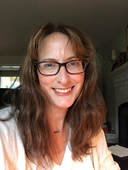 Annie Romano is a literary associate with Olswanger Literary. She represents adult fiction and select nonfiction projects. She is also a published children’s book author and one of the founders of 24 Carrot Writing. You can learn more about her at www.anniecroninromano.com.  Oh, yes! It's that time of year again. Each year as the holiday season approaches, the 24 Carrot Writing crew asks featured guest bloggers to share their favorite writing and/or illustrating gadgets, tools, or items that help them in the creation of their work. Sometimes they share a favorite tool they use in their daily creating; other times it's an item that brings them comfort, joy, or motivation as they work. It is our hope that this writers' gift list provides you with unique holiday gifting ideas, be it for yourself or for the writers in your life. This year, we're posting our list earlier than we have in the past to allow more time for perusing and, of course, shipping! So take a look, and if you have any favorite items that you use in your writing/illustrating, please share them with us in the comments section. We always love to hear from you!
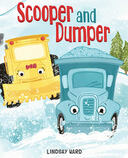 Lindsay Ward is an author illustrator from Ohio. Her most recent book Scooper and Dumper launched from Two Lions in November of 2020. Her work has been reviewed in Kirkus Reviews, Publisher’s Weekly, and The New York Times and she is the founder of Critter Lit, a free online picture book manuscript and illustration critique service for up-and-coming authors and illustrators. Each year, I use a simple composition notebook as a modified bullet journal, and I typically buy them at the beginning of the school year when they are on sale. I use my glue gun to add an elastic loop for my pen and a ribbon bookmark to track my place. I am not a diehard bullet journaler, but I always include a table of contents in the front so I can track story ideas, work on different drafts, notes from webinars, and from meetings with my agent, etc. In the back, I include an ongoing list of every single annual accomplishment/celebration, as small as finishing a draft or a school Skype visit, and as big as a book sale or a major review. Author Michelle Cusolito has wonderful blog post about bullet journaling for writers: https://www.12x12challenge.com/bullet-journaling-for-writers/. At the end of each year, I look forward to reviewing my accomplishments and making a plan for the new year. 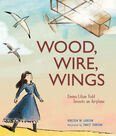 Kirsten Larson is the author of WOOD, WIRE, WINGS: EMMA LILIAN TODD INVENTS AN AIRPLANE (Calkins Creek, 2020) and the upcoming A TRUE WONDER: The Superhero Who Changed Everything, illus. Katy Wu (Clarion, 2021) and THE FIRE OF STARS: The Life and Brilliance of the Woman Who Discovered What Stars are Made Of, illus. Katherine Roy (Chronicle, 2022). Learn more about Kirsten at kirsten-w-larson.com.
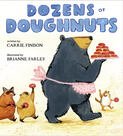 Carrie Finison is the author of DOZENS OF DOUGHNUTS (illustrated by Brianne Farley), released in 2020 from G.P. Putnam's Sons Books for Young Readers, and the upcoming picture book DON’T HUG DOUG which will arrive on shelves in January, 2021. Find out more at https://www.carriefinison.com.
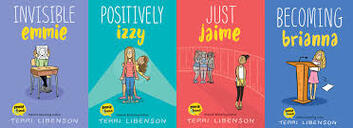 Terri Libenson is a New York Times bestselling children’s book author and award-winning cartoonist of the syndicated daily comic strip, The Pajama Diaries, which ran from 2006-2020. BECOMING BRIANNA, the fourth book in her Emmie & Friends series released in 2020. Find out more at http://terrilibenson.com. It's intended use is to keep track of weekly appointments and such, but I use it to create a visual representation of how much work I've done by marking each completed task with a stamp at the end of the day. When doing the art for a book that's 200-plus pages, the ritual of marking my achievements and watching them stack up over the course of the month feels rewarding... and always having the pad on the corner of my drafting table lets me know when I need to get my butt into gear to meet a deadline.  Kayla Miller is the author and illustrator of the best-selling Click series of graphic novels. The fourth book in the series, CLASH releases in 2021. Learn more about Kayla at https://www.kayla-miller.com. They're small enough to carry everywhere, so as long as you've got a pocket and a pen or pencil, you're good to go. Sometimes I make my own notebooks, but these are very nice ones from the CW Pencil Enterprise, one of my favorite small businesses - they used to be dedicated to selling only pencils (plus erasers and sharpeners), but are about to expand to carrying a variety of other writing tools as well, "prioritizing brands that are local, small and have great sustainability and ethics practices". Excellent! For a really special treat I'm eyeing this bright book. 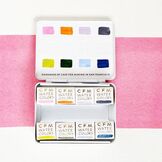 I use watercolors for my illustration work, and am always excited to find a new paint to try out. A few years ago in San Francisco I stumbled across a tiny shop dedicated to handmade watercolors called Case For Making, and I've finally treated myself to a palette and some paints from them. Each color is blended and made by hand in their San Francisco shop, and the business is very small, woman-run, and speaks out about important causes, so I feel good supporting them. Many of their colors are unique, filling gaps I didn't even realize existed in my well loved watercolor palette. 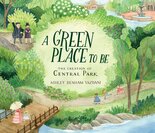 Ashley Yazdani is a picture book author/illustrator, reader, and nature lover. Her Golden Kite Award winning debut book, A Green Place to Be, is currently available from Candlewick Press and can be found at your local bookstore. To learn more, visit http://www.ashleyyazdani.com. 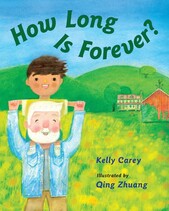 Qing Zhuang is the illustrator of “How Long is Forever?” (written by Kelly Carey and published by Charlesbridge 2020). She is currently writing and illustrating a new book tentatively titled “Rainbow Shopping” due to be released by Holiday House Summer 2022. Visit www.Qingthings.com and follow her on Instagram @Qingthings for more news and information!
 Jordan Standridge is a Marketing Associate at Charlesbridge Publishing. He makes sure authors, illustrators and books gets out into the world! To learn more about Charlesbridge and the books Jordan works with visit the Charlesbridge website by clicking here.
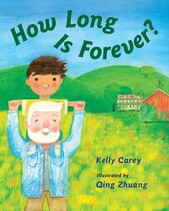 Kelly Carey is a co-founder of 24 Carrot Writing and the author of How Long Is Forever? (Charlesbridge, April 2020). Learn more about Kelly by visiting her website.  Annie Cronin Romano is a co-founder of 24 Carrot Writing and the author of two children's books: Before You Sleep: A Bedtime Book of Gratitude (Page Street Kids, 2018) and Night Train: A Journey from Dusk to Dawn (Page Street Kids, 2019). To learn more about Annie, visit her website at www.anniecroninromano.com.
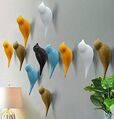 I am also absolutely in love with my DesignSter Resin Bird Coat Hooks. They are awesome for office organization, and a whimsical place to hang library totes.  Amanda Smith is a co-founder of 24 Carrot Writing. Her poems "Stingray" and "Cuttlefish" can be found in the Writers' Loft's newest illustrated anthology FRIENDS AND ANEMONES: Ocean Poems for Children. Learn more about Amanda at AmandaSmithWrites.  by Annie Cronin Romano You’ve heard the advice: read what you write. Do you write nonfiction picture books? Read hundreds of them. Are you a middle grade fantasy writer? Read all the fantasy MG you can get your hands on. Write dystopian young adult? You get the picture. Let me be clear. This is good advice. Solid advice. It is imperative to be aware of what is getting published in the area in which you write. It’s important to study it. What makes those books work? Why did it make it to the shelves? What is unique about the concept? But what writers often overlook is that it is just as important to nourish our reading souls as it is our writing knowledge. That means reaching for that book outside the genre in which you write and reading for pleasure. Grab that commercial book club novel. Dive into that mystery or psychological thriller. Itching to check out a sci-fi series? Go for it. Pour a glass of wine and crack the spine on that romance. I write picture books and middle grade, and I read as much as I can in both those areas. For quite a while, that’s all I read. But since working in a bookstore and a library for nearly a year, I’ve been reading a lot more YA and adult books of all stripes. I needed to be familiar with what was on the shelves beyond just the children’s sections. When customers and library patrons come in, I have to be prepared to offer tips and guidance in a broader range of areas. And—Surprise! Surprise!—I discovered I could learn a lot from those books that–despite not being the type of books I write--offered a window into strengthening my own writing, regardless of the genre. I found myself considering pacing, character development, plot, setting: the elements that are required in any story, inspired from a different perspective. I wondered how I could try different styles and points of view, how I could switch up my characters and make them more engaging, how I could play with setting and voice. I was still reading for pleasure, of course, but I realized that even though a book isn’t specifically a mentor text to what I write, I can still learn about the art of writing from reading it. Eureka! Of course, no matter what I read, I’m always enjoying myself. But often, I felt locked into a particular genre because it aligned with what I wrote. Now I read more outside my writing genres because it feeds my reader’s soul and, I firmly believe, makes me an even better writer. So yes, continue to read mentor texts and study the areas in which you write, but go beyond that, too. Make time to read whatever catches your fancy. Your inner reader and your thoughtful writer will thank you for it. 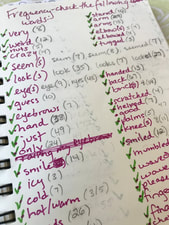 By Annie Cronin Romano If you’ve ever taken a workshop on novel revision, there’s a good chance you’ve heard your fellow writers mention doing frequency checks on words that are often overused. These “weed words” are words or phrases that pop up over and over in your manuscript without adding texture to your narrative. Using the “find” feature, you type in the word you want to check and then edit accordingly. But did you know the exercise of a frequency check can and should go beyond merely deleting or changing an overused word? It can help you catch stereotyped phrasing and increase your awareness of varying descriptions and vocabulary. Recently, I was completing frequency word checks while editing my middle grade novel. When I first started the revisions, I kept a running log of words I noticed I was using frequently. Rather than interrupt my flow when writing, I'd simply jot down the word in my log to check later. However, it was while doing the common words frequency check that I discovered my own personal “weed words.” For instance, I never realized how frequently I used the words “hand” "reached," and “turned” in this particular manuscript until I started the frequency check. They kept showing up! I was astounded at how often I used certain words I didn’t think of as overly-common. In finding those words, I also picked up on similarities in many of my descriptions. (Didn't she "roll her eyes" three paragraphs ago?) As I edited, my weed word list grew from about 40 words on my running list to over 100 words (i.e., adding "roll" and "eyes"), and the task at hand became much more than a find-and-replace drill. I delved deeper into my writing, examining my voice and style as I edited. Questions I began asking included, “How can I convey that feeling differently?” "Is this truly how the character would say this?" “What else can my character do to show that reaction?” and “Is this line essential/moving the story forward?” What started as a basic editing drill led me to reexamine my overall writing technique and how it impacted my story as a whole. The result was a significantly stronger manuscript. I have included a frequency words list below, which includes words I discovered I use too often (my own personal "weed words") as well as some of the usual suspects ("very," "really," "seems," etc.). Your list may look quite different, but this will give you a place to start. Sometimes your weed words may be project-specific (i.e., if you're working on a book that takes place in the desert, check for words like "sand," "dry," and "arid"). You don't have to eliminate every instance of these words; use the list as a tool to ensure you vary your vocabulary and minimize common phrasing and descriptions. The next time you’re editing your work, consider going beyond the find-and-replace approach to thinning out your weed words, and dig down further to bring out the best in every line. Weeding, when paired with conscientious revision, will make every word sing!
 by Annie Cronin Romano March is National Reading Month, and in honor of this auspicious occasion, we at 24 Carrot Writing have decided to share some of our favorite kidlit books. I'm starting off this series by highlighting five books which have reached into my reader/writer's heart and made it skip a beat. 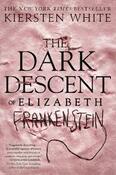 THE DARK DESCENT OF ELIZABETH FRANKENSTEIN, a young adult novel by Kiersten White, kept me enthralled from chapter one. This YA retelling of Mary Shelley's FRANKENSTEIN is told from the perspective of Elizabeth Lavenza and takes the reader on a journey of darkness, devotion, love, and survival that leads one to wonder who the monsters among us truly are. Atmospheric and haunting! 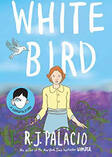 I adored R.J. Palacio's WHITE BIRD. This middle grade graphic novel depicts the horrors of one Jewish girl's experience during the Holocaust with tenderness and hope. Engaging illustrations add to the vividness of this story. Readers who have enjoyed WONDER and AUGGIE & ME will appreciate the connection to those stories as this story is narrated by Julian's grandmother. 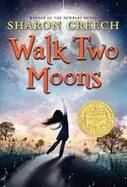 One of my all time favorite middle grade novels is Sharon Creech's WALK TWO MOONS. Salamanca Tree Hiddle is a 13-year-old on a journey from Ohio to Idaho with her grandparents. During the trip, Sal entertains her grandparents with the tale of her friend, Phoebe Winterbottom, and their quest to find out why Phoebe's mother abandoned her family. Sal's story emerges through the narrative, which alternates between Sal's memories of her own mother and her telling of Phoebe's story. Layered and bittersweet, this Newbery Medal winning book of family ties, loss, and understanding the experiences of others is a must read. 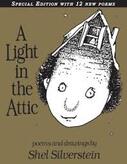 If you need a smile, then reach for A LIGHT IN THE ATTIC, by Shel Silverstein. This humorous collection of poetry and sketches will add a bit of joy to any day. Full of Silverstein's imagination and whimsy, these poems grasp the minds and hearts of young readers, leading them to laugh and ponder. You're certain to crack the spine of this book again and again for another dose of wit and insight. 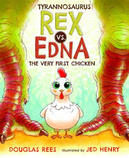 Enjoy a good laugh and and unexpected heroine? Than grab TYRANNOSAURUS REX VS. EDNA THE VERY FIRST CHICKEN. Tyrannosaurus Rex may frighten all the other dinosaurs, but he cannot scare Edna! This hilarious picture book, written by Douglas Rees and illustrated by Jed Henry, shows that just because you're small doesn't mean you're weak. The defiant Edna will leave you cheering! Kelly and Amanda will share some of their favorite kidlit titles in the coming weeks. In the meantime, please tell us what some of your favorites are!
~Annie 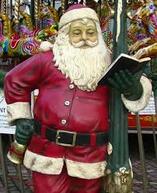 by Annie Cronin Romano The holiday season has arrived. When my children were young, one of our favorite activities to do was cuddling on the couch reading holiday picture books. Sometimes there were old favorites; other times they were the latest arrivals at our local library or bookshop. This post is a mix of holiday classics and newer arrivals to the shelves. Hopefully you'll find a few titles to add to your "must read" list (links are included with the cover images). Please share your favorite holiday picture books in the comments! SANTA MOUSE, by Michael Brown, illustrated by Edfrieda DeWitt MR. WILLOWBY'S CHRISTMAS TREE, by Robert E. Barry PICK A PINE TREE, by Patricia Toht, illustrated by Jarvis RED AND LULU, by Matt Tavares CHRISTMAS FARM, by Mary Lyn Ray, illustrated by Barry Root OSKAR AND THE EIGHT BLESSINGS, by Richard Simon & Tanya Simon, illustrated by Mark Siegel THE TREE THAT'S MEANT TO BE, by Yuval Zommer HANUKKAH BEAR, by Eric A Kimmel, illustrated by Mike Wohnoutka OLIVE, THE OTHER REINDEER, by J. Otto Seibold and Vivian Walsh SEVEN SPOOLS OF THREAD: A KWANZAA STORY, by Angela Shelf Medearis, illustrated by Daniel Minter DASHER, by Matt Tavares THE TREES OF THE DANCING GOATS, by Patricia Polacco Happy Holidays from all of us at 24 Carrot Writing!
 by Annie Cronin Romano Most writers keep a pen and paper handy to record story ideas when inspiration strikes. You see something that captures your imagination or overhear a phrase that causes your writing detector to go on high alert, and you quickly scribble it down. Perhaps you write it a in a small notepad, or maybe you jot it down on a napkin or placement. You may even write it on your hand if there’s no paper available. I have done all of those things. Sometimes I tear out a newspaper article that has sparked a story idea or print out a news story or photograph that made my writing radar start beeping. Eventually, most writers have a folder or notebook stuffed with scraps of paper—a collection of golden story nuggets waiting to be mined for their potential. But when you finally cull through those ideas, it can be a daunting task. I recently decided to take on my “idea folder.” I took it out of my file cabinet and placed it on my desk. Where it sat. Staring at me. Cruelly. Mockingly, even. Then one day I was out browsing in a home store and spotted a display of home office supplies. As a writer, desk and stationary supplies are like candy to me, so I walked over to explore. There, on top of the pile of journals, was a hard cover spiral notebook with the words “BIG IDEAS” (typed in extremely small print, ironically) on the cover. It was fate. I bought the notebook and took it home to introduce it to my idea folder. Big Ideas notebook, meet Idea Folder. Idea Folder, I love you, but you’re a mess. Meet Big Ideas notebook. 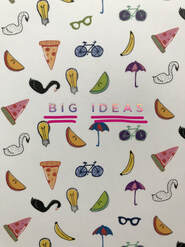 I went through my scraps of idea notes and, one by one, began writing those sparks at the top of each notebook page. I left the rest of the page blank. One idea per page with the blank page below for brainstorming. As I have time, I open to a page, read the idea at the top, and brainstorm story thoughts, plots, characters...anything that comes to mind. Sometimes it’s a doodle. Sometimes it’s a list. Sometimes it’s a diagram or several sentences. Whatever it takes to play with the idea and see what potential stories I can tease out of it. This notebook system keeps my ideas in one space, like a folder, but organized for easy access with blank space for development. It has become the garden where I plant my story seeds and then tend to them to see what sprouts. So go buy yourself a notebook for your Big Ideas--you know you love shopping for office supplies! Maybe even get some colorful pens to add to the joy! Then organize those randomly scattered idea gems into the notebook. Remember, just one per page. And let the brainstorming begin! Who knows where those sparks will take you. You may get a new story blazing before you know it! 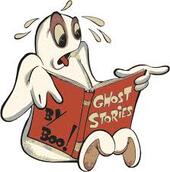 By Annie Cronin Romano October is well under way with leaves of amber and crimson, cool, crisp evenings, apple cider, winding corn mazes, and, of course, Halloween! Whether it’s carving pumpkins or choosing what costume to wear trick or treating, most families have traditions they enjoy throughout the fall season. As you embrace Halloween preparations, don’t forget to visit your library or bookstore to snag a few Halloween and seasonal books, and add some new favorite reads to your October rituals. This list contains just a sampling of the entertaining spooky and autumn-themed kidlit books to be discovered. Included are both older classics and newer releases. Most I have read and enjoyed myself. A few were suggested by other avid readers. Pick one or all of them, and dive into these stories of pumpkins, scarecrows, and things that go “Boo!” in the night! PICTURE BOOKS MR. PUMPKIN’S TEA PARTY by Erin Barker ROOM ON THE BROOM by Julia Donaldson, Illustrated by Axel Scheffler THE SCARECROW by Beth Ferry, Illustrated by the Fan Brothers LOS GATOS BLACK ON HALLOWEEN! by Marisa Montes, Illustrated by Yuyi Morales SAMURAI SCARECROW: A VERY NINJA HALLOWEEN by Rubin Pingk OAK LEAF by John Sandford BIG PUMPKIN by Erica Silverman, Illustrated by S.D. Schindler THE LITTLE OLD LADY WHO WAS NOT AFRAID OF ANYTHING by Linda Williams, illustrated by Megan Lloyd MIDDLE GRADE THE NIGHT GARDENER by Jonathan Auxier THE JUMBIES by Tracey Baptiste WATCH HOLLOW by Gregory Funaro THE GRAVEYARD BOOK by Neil Gaiman TOOK: A GHOST STORY by Mary Downing Hahn SCARY STORIES FOR YOUNG FOXES by Christian McKay Heidicker GHOST: THIRTEEN HAUNTING TALES TO TELL, a collection by Illustratus And a few YOUNG ADULT… MARY’S MONSTER: LOVE, MADNESS, AND HOW MARY SHELLEY CREATED FRANKENSTEIN by Lita Judge MISS PEREGRINE’S HOME FOR PECULIAR CHILDREN by Ransom Riggs PUMPKIN HEADS: A GRAPHIC NOVEL by Rainbow Rowell, Illustrated by Faith Erin Hicks Please share some of your favorite kidlit Halloween/fall season books in the comments.
And HAPPY HALLOWEEN! 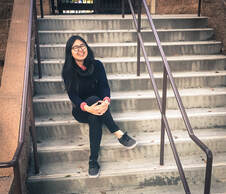 Guest blog by Ileana Soon Hello! My name is Ileana, and I am the illustrator behind Annie Cronin Romano's book, Night Train: A Journey From Dusk to Dawn. I was invited by 24 Carrot Writing to contribute some of my thoughts and share my experience bringing Night Train to life. There were a lot of things I learnt along the way. I'll touch on my process here as well as walk you through some of my thoughts behind my visual decisions. This will be fun! Getting the manuscript, thoughts and ideas I was really excited when I got the manuscript as I had felt like the story was right up my alley. It had travel, a train journey, and a great sense of adventure. Whilst reading the script, the feelings it evoked popped a few visual references into my mind, such as the movie A River Runs Through It (directed by Robert Redford) as it seemed to capture the same feeling. Seeing as it was a period setting, other visual references soon followed that were also period pieces; movies like Testament of Youth (directed by James Kent) and The Painted Veil (directed by John Curran). Below are some screenshots taken from the movies mentioned. As an illustrator, I think it is important to always bring something personal to every project worked on, the theory being that sharing a personal experience through art will somehow invite an emotional connection from the viewer, even if it's something that can't quite be explained. I find that throughout my life I have been attracted to paintings only to find that it, too, was very personal to the artist. Reading Annie's script brought back a lot of my memories travelling as a student throughout Europe and the UK. To save on accommodations, there were many nights spent at train stations and on trains, enroute to the next destination. It was the perfect experience to borrow from as I remember some nights staring out the window from my train, and watching the sun rise as the train moved into a new station and country the following morning. It was exhilarating. Below are some pictures taken during my travels that served as reference. To begin, it was important to lay out the pacing of the text. What would be the rhythm of this book? Using Photoshop, the words were cut and pasted onto each page until the pacing felt right. Next, I wanted to come up with a visual vocabulary for this world. As you may now realise, cinema is something I really love, and borrowing from this, the art direction for this world could be set in screen direction, and colour. Visually, it's a challenging task to illustrate a train making a journey through the night. If you think about it, how many truly different ways are there to paint a night sky? How many night skies can there be in a book without boring the reader? (Surely not 32 pages!) To vary and make it visually interesting, I wanted to bring variation to this journey through colour temperature as you can see in the swatches below. I will also touch more on colour later. Screen direction (or page direction in this case) seemed important to show continuity in the train's journey from dusk to dawn. It's vocabulary that some films use to show progress for a character throughout a plot. It's a subtle thing, but throughout the book the train always moves from the left of the page to the right. Every single page. Included below is this thought laid out in a page sent to the publisher. Let's draw! So to recap, here is a summation for the visual vocabulary of Night Train. Inspired by the aforementioned films, the story was set in the 1920/30s. Inspired by my travels in Europe and the UK and a train journey that I took from a big city to a small town by the sea in the UK, I thought mapping a similar route would help to capture the same sense of wonder in these illustrations I felt on that journey. The colours would change from warm in the beginning to cool by the end. The screen direction for the train would always move from left to right. Annie also shared her thoughts of how it would be great to set the train journey in the Pacific Northwest. Great! More specificity — always a good thing. Ideations, thumbnails, sketches and revisions Since pacing is very important, it was important for me to ideate the entire book in one go, instead of focusing on a page at a time. This meant jotting (drawing) ideas out on posits whilst laying out the entire book. This is all done by hand, sticking post-its to a wall. This was a habit my director and I used to do, whilst previously working at an agency as a lead designer, doing different storybeats for commercials and laying it all out in sequence on a glass window. Below are the rough notes ideating for Night Train in sequence. Please forgive the roughness of this; this is not something I would ever show to anyone and it's done for my reference only when beginning a project. They are just thoughts. Doing this provides an opportunity to see the story as a whole and choose compositions that work sequentially to match the pacing in relation to each other, rather than picking the best composition for every page, which would make the book tonally flat (imagine a loud note for every page — not fun to listen to surely). I sometimes imagine sequential images as a song: the notes (images) have to flow together nicely, the volume (light vs dark) has to modulate as well, and all in one key! That's where visual vocabulary comes in. From these thoughts, images are chosen to put together thumbnails to deliver to the publisher: After the thumbnails are delivered, the team at Page Street gave me a green light to move toward sketches. Sketches are refined drawings from the thumbnails presented. From these sketches, my Artistic Directors give feedback, and these sketches go back to the drawing board until they are approved. The team at Page Street had the fine idea of introducing a family as characters that we could follow throughout the book, instead of the separate individuals I had previously sketched out. Great idea! Some sketches are approved straight away, but some go through several iterations. Included herein is a sample of the evolution of a sketch from presentation to approval: Colour Script After all the sketches were approved, I was asked to bring a spread to finish, and somehow in the back and forth with the team at Page Street, I proposed the idea of doing a colour script so they could see at a glance how to book would look like as a whole. Included herein is the colour script that was sent to Page Street: Challenges with colour One of the great challenges of this project was to find a way to have words sit on a page against the night sky whilst still being legible. Blue, or black for that matter, is dark in value, and black words against a dark blue sky is very hard to read. The publisher specified at some point that most of the type printed would be black, so on my end I felt it was important to structure the pages so that the words could be read against the painted backgrounds. Additionally, there was also the extra challenge as previously mentioned to make the pages more exciting, as 32 pages of purely dark blue skies would make the book tonally flat. Thus, if you notice, less than 50% of the book (about 41%) is actually set against a dark blue sky, whilst the rest is set against the backdrop of the sun setting, and the sun rising, which gives a lot of opportunity for the black type to sit against lighter backgrounds, making it more legible. This opportunity also opened up a pocket of time in terms of the hours that the train started and ended its journey. If its journey started at say 5pm, and ended at say 7am, the different variations of light that it would see during its journey would naturally vary a lot, bringing with it many exciting ways to introduce changes in colour temperatures as the pages turned. Sticking to the visual vocabulary of moving generally from a warm palette to a cool palette from beginning to end, the frames have been aligned in sequence here so it may be easier to see what my thought process was like in doing this colour script. Race to the finish After the colour script was approved, everything from there on out was very straightforward. It was really a matter of just refining the pages from the colour scripts to a bigger final, finessing the final details, and adjusting colours as needed. Since it was set in a very specific time period, and also in a very specific geographic region, it really is important to make sure that all the references were right, from the costumes to the shapes of trees and smaller details surrounding all the pages. Below are some costume references sourced from that time period. These references were sourced from books at the library, archived film footage, as well as Pinterest. The final few weeks working on this really did feel like a race to the finish! Below is an example of the evolution of a page from the colour script to the final. The End Delivering the pages to my AD was a great feeling, and she has to be thanked for really being there at every step of this journey with me. I sincerely believe that all the feedback given made the pages better, and the visual ideas stronger. Hopefully, this translates over to the reader when they pick up this book. Final thoughts
Thank you for letting me share my process of bringing Night Train to life with you, and thank you to 24 Carrot Writing for inviting me to do so. I hope it was helpful and am looking forward to reading all the different approaches/processes other illustrators have here in the future. About the Illustrator Ileana Soon is an illustrator/vis dev artist who grew up in a small seaside town in Borneo, before making her way to Los Angeles where she currently lives and works. Her clients include The Wall Street Journal, The New York Times and Oprah Magazine. She has also won multiple awards, including a Silver Medal from 3x3, as well as recognition from American Illustration and The World Illustration Awards. Learn more about Ileana and see more of her work at http://ileanasoon.com/, on Instagram at https://www.instagram.com/ileanadraws/, and on Behance at https://www.behance.net/ileanasoon. |
Peruse blogs for advice and tips from KidLit creatives.
Categories
All
Archives
April 2024
Click to set custom HTML
Click on the RSS Feed button above to receive notifications of new posts on this blog.
|
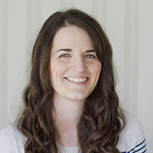
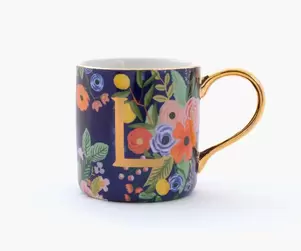
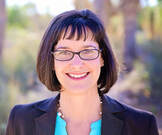
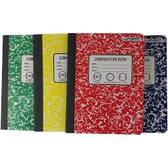

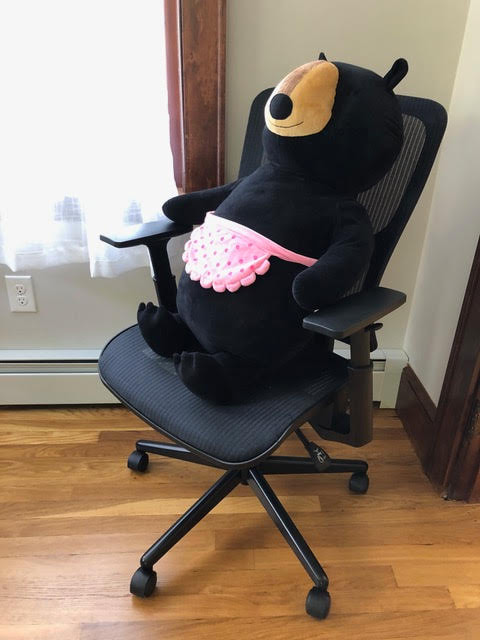
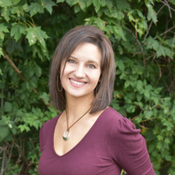

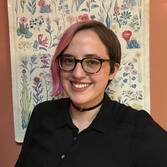
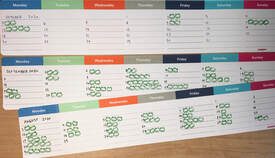

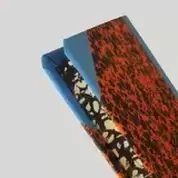
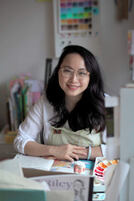
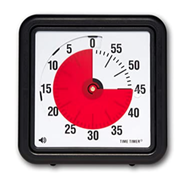

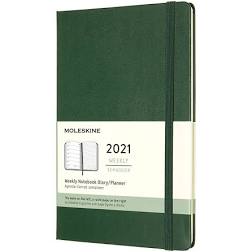
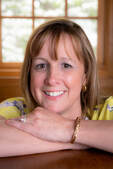

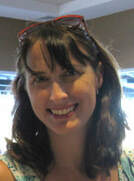
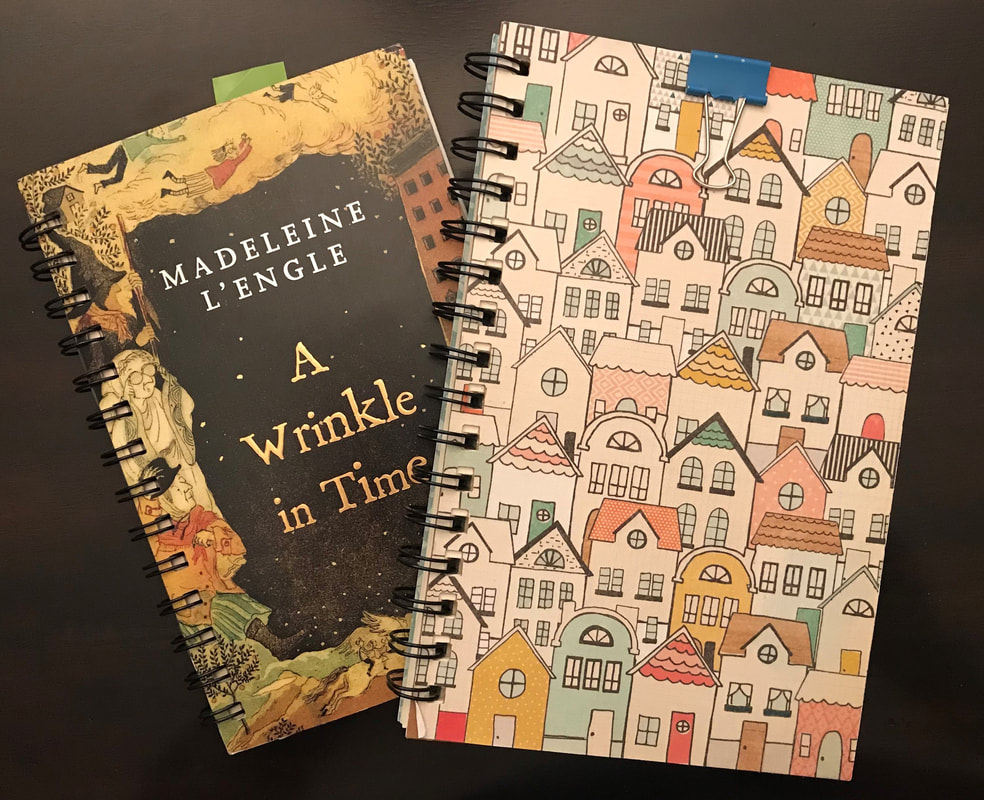
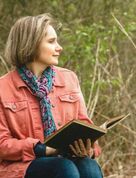
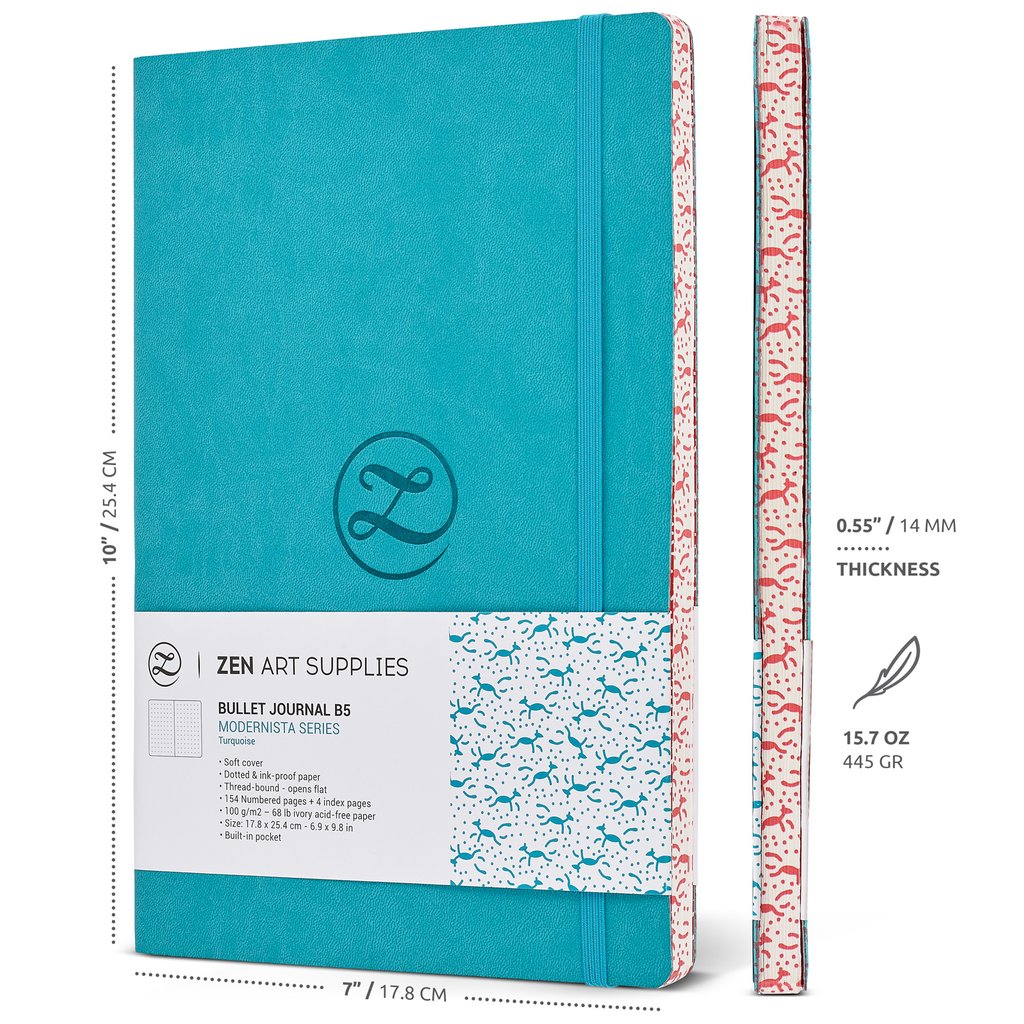
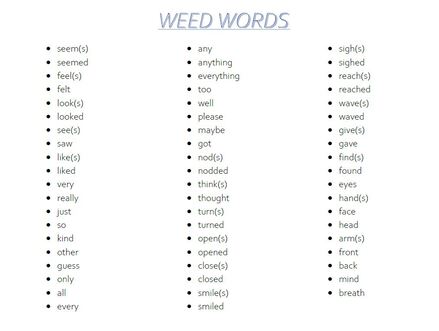
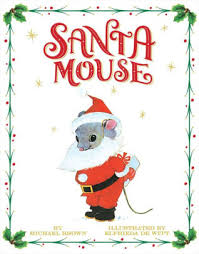
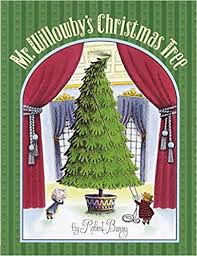
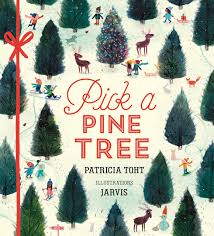
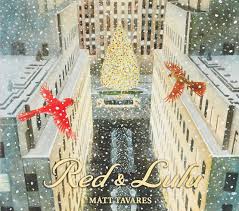
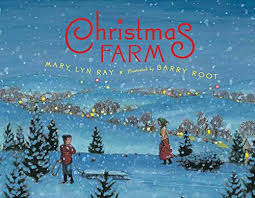
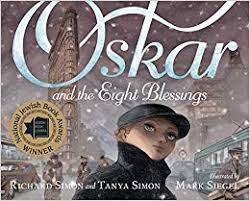
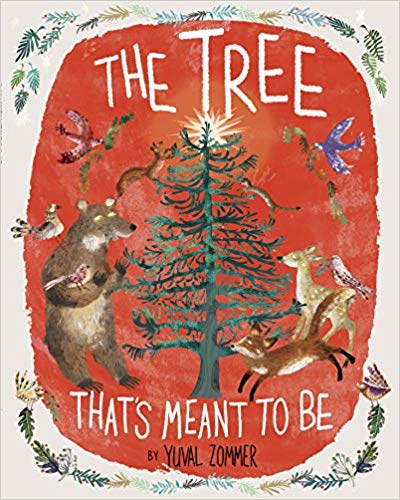
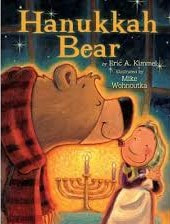
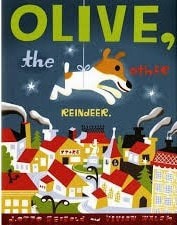
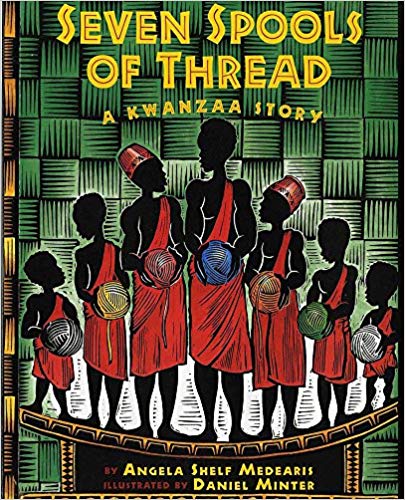
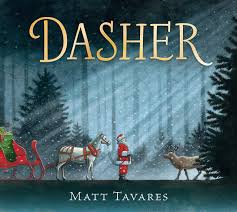
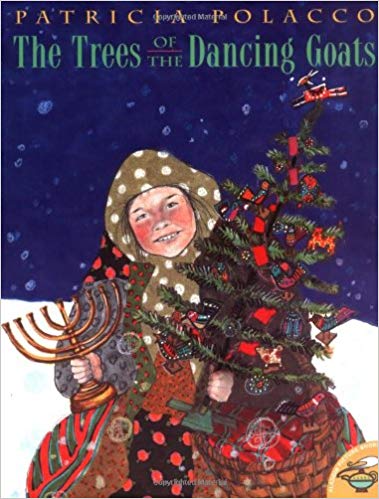
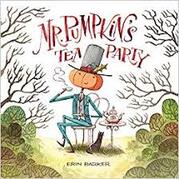
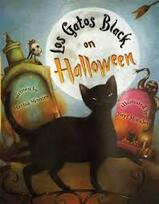
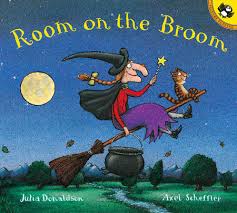
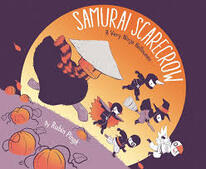
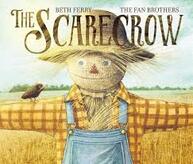
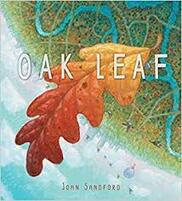
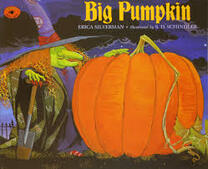
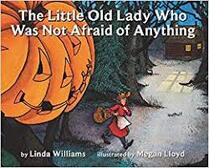
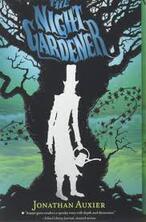
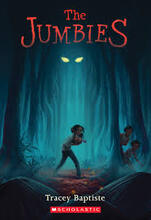
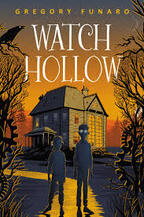
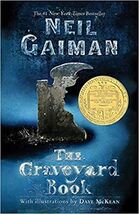
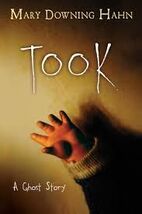
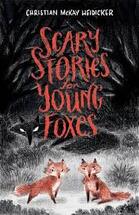
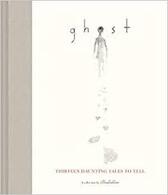
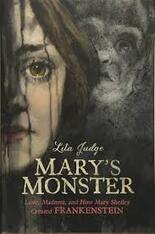

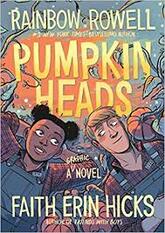
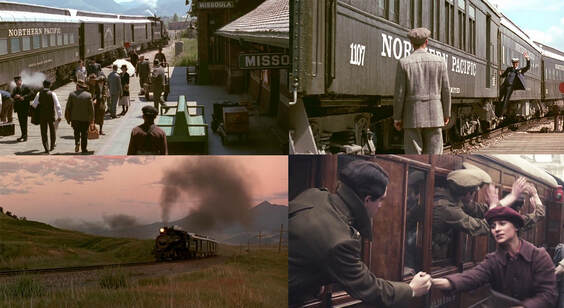

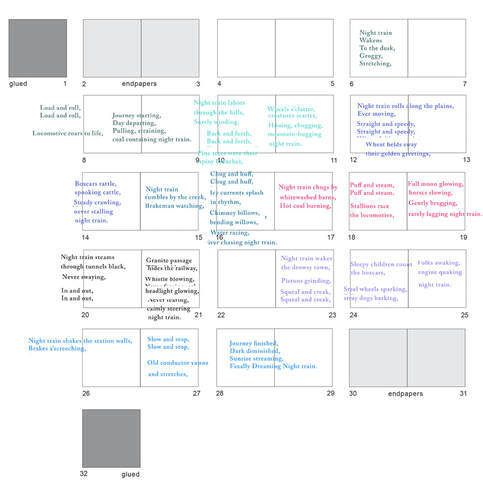



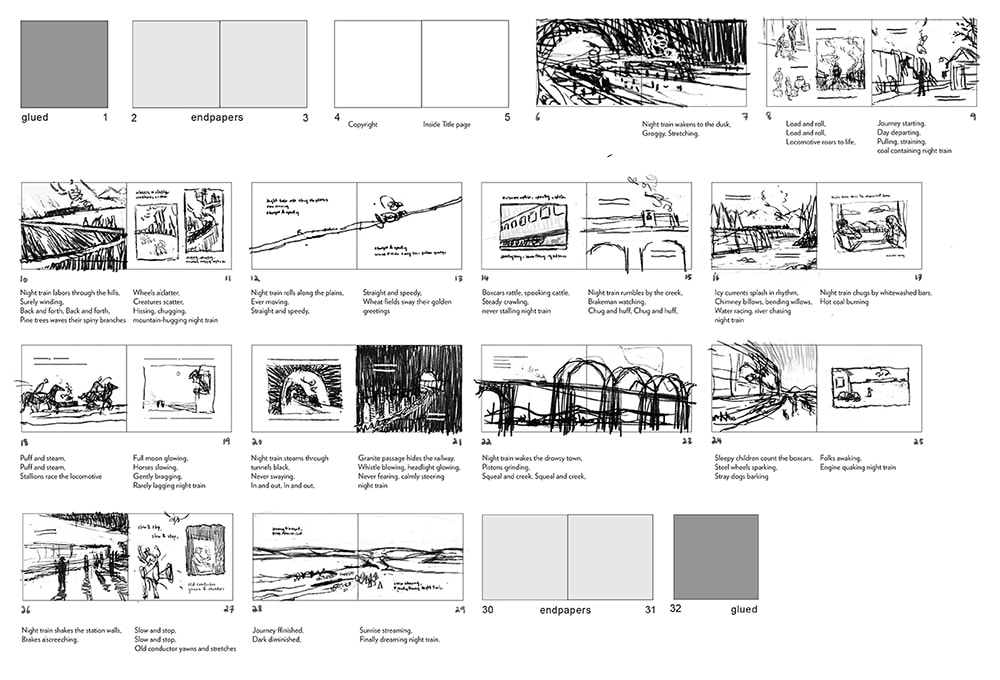
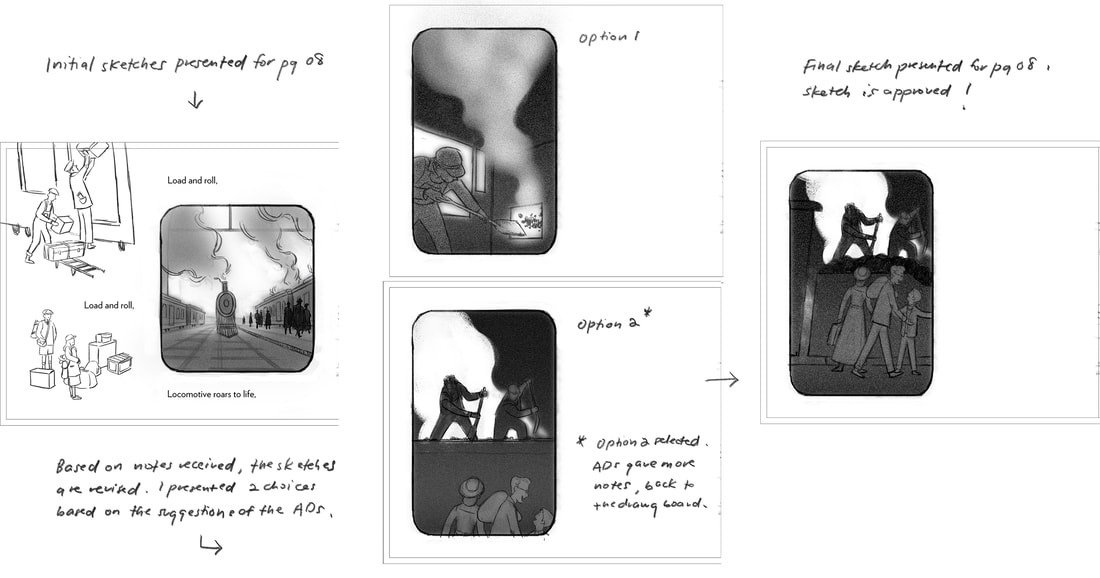


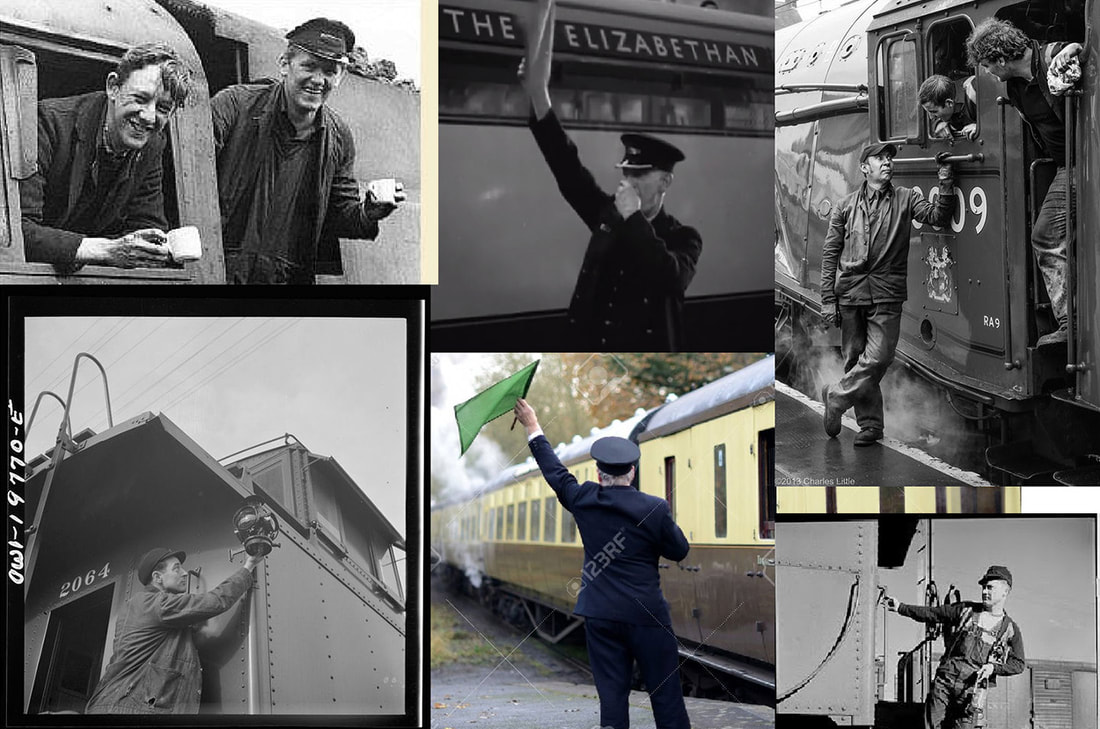
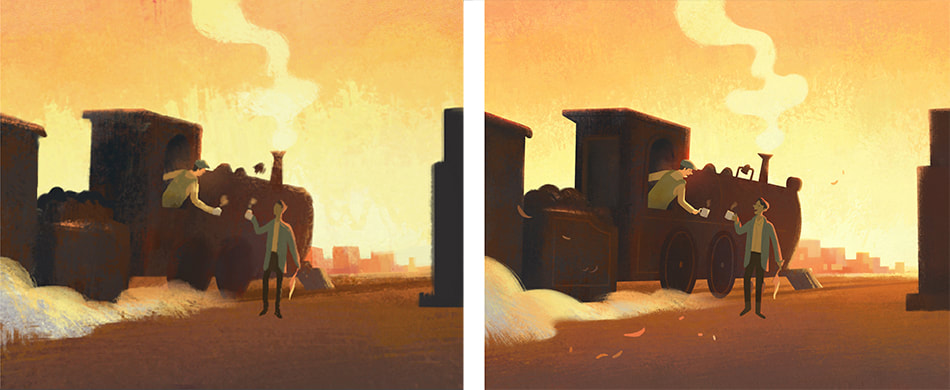
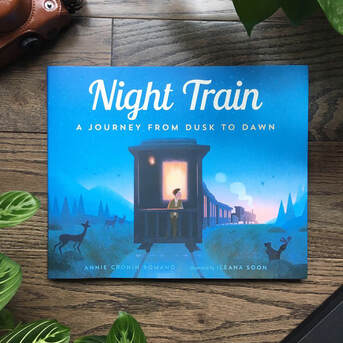
 RSS Feed
RSS Feed